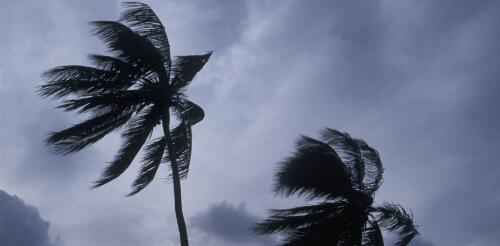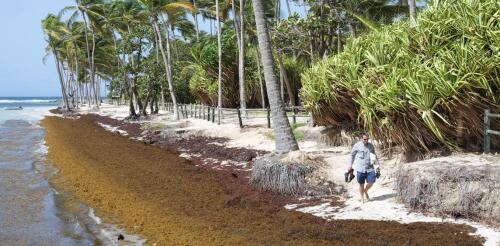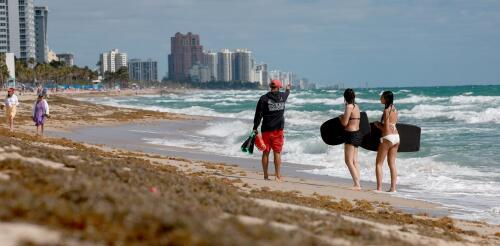Caribbean
Preparing for Atlantic hurricane season is always a priority in the Caribbean, especially when forecasts project high numbers of storms, as they do for 2024. The region’s most devastating storm in recent years, Hurricane Maria, struck in September 2017 and inflicted unprecedented destruction on Puerto Rico, Dominica, St. Croix and other islands. Maria killed more than 3,000 people and caused about US$96 billion in damage. It devastated Puerto Rico’s electric power system, leaving 1.5 million customers in the dark for up to 328 days – the longest blackout in U.S. history. These outages had cascading impacts on other infrastructure, such as water and communications systems. Today, the Caribbean region is experiencing new climate-related challenges. Prolonged extreme heat and humid days are increasing because of the accelerated warming of ocean waters. In response to these increasingly frequent and extreme weather events, I teamed up with a dozen other resea...
Museums often celebrate new acquisitions, especially something rare or historic. In April 2024, scientists from the Natural History Museum of Jamaica and The University of the West Indies, Mona Campus accepted a very rare and historic specimen: a 16-inch lizard called the Jamaican giant galliwasp (Celestus occiduus). It had previously been stored in the Hunterian museum at the University of Glasgow in Scotland. “‘Celeste’ is home!” announced one Jamaican news outlet, invoking the nickname scientists had given the reptile, which they believed was a female. A close-up of ‘Celeste,’ the Jamaican giant galliwasp specimen repatriated to Jamaica. Jane Barlow/PA Images via Getty Images Why would a preserved lizard, some 170 years old, evoke such excitement? Celeste was collected in the 1850s and represents a species that was endemic to Jamaica but is now classified as cri...
The Caribbean’s sandy beaches, clear turquoise water and vibrant coral reefs filled with an amazing variety of sea creatures have long been the pride of the islands. The big three – sun, sea and sand – have made this tropical paradise the most tourism-reliant region in the world. But now, all of that is under threat. The explosive growth of a type of seaweed called sargassum is wreaking havoc on economies, coastal environments and human health across the islands. I study the intersection of critical infrastructure and disasters, particularly in the Caribbean. The sargassum invasion has worsened since it exploded in the region in 2011. Forecasts and the seaweed already washing up suggest that 2024 will be another alarming year. Sargassum levels were already high around many eastern Caribbean islands in late May 2024. Forecasters expect increasing sargassum washing up in June on many of the islands and in the Gulf of M...
In the popular imagination, the Caribbean is paradise, an exotic place to escape to. But behind the images of balmy beaches and lush hotel grounds lies a crisis, the likes of which its residents have never experienced. Caribbean islands are in a water crisis, and their governments have warned that water scarcity may become the new norm. Within the past five years, every island in the region has experienced some sort of water scarcity. For example, Trinidad is experiencing its worst drought in recent memory, and residents are under water restrictions through at least the end of June 2024, with fines for anyone who violates the rules. Dominica, considered the nature island of the Caribbean for its mountain rain forests, is seeing a significant decrease in freshwater resources and increasingly frequent water shortages. In Grenada, known as the spice isle, drought has affected water systems throughout the island. Apartments in Havana, Cuba,...
An unwelcome visitor is headed for Florida and the Caribbean: huge floating mats of sargassum, or free-floating brown seaweed. Nearly every year since 2011, sargassum has inundated Caribbean, Gulf of Mexico and Florida coastlines in warm months, peaking in June and July. This brown tide rots on the beach, driving away tourists, harming local fishing industries and requiring costly cleanups. According to scientists who monitor the formation of sargassum in the Atlantic Ocean, 2023 could produce the largest bloom ever recorded. That’s bad news for destinations like Miami and Fort Lauderdale that will struggle to clean their shorelines. In 2022, Miami-Dade County spent US$6 million to clear sargassum from just four popular beaches. Satellite image of sargassum concentrations in the Atlantic during the month of March. USF/NOAA, CC BY-ND Sargassum isn’t new on South Florida beaches, but its r...




